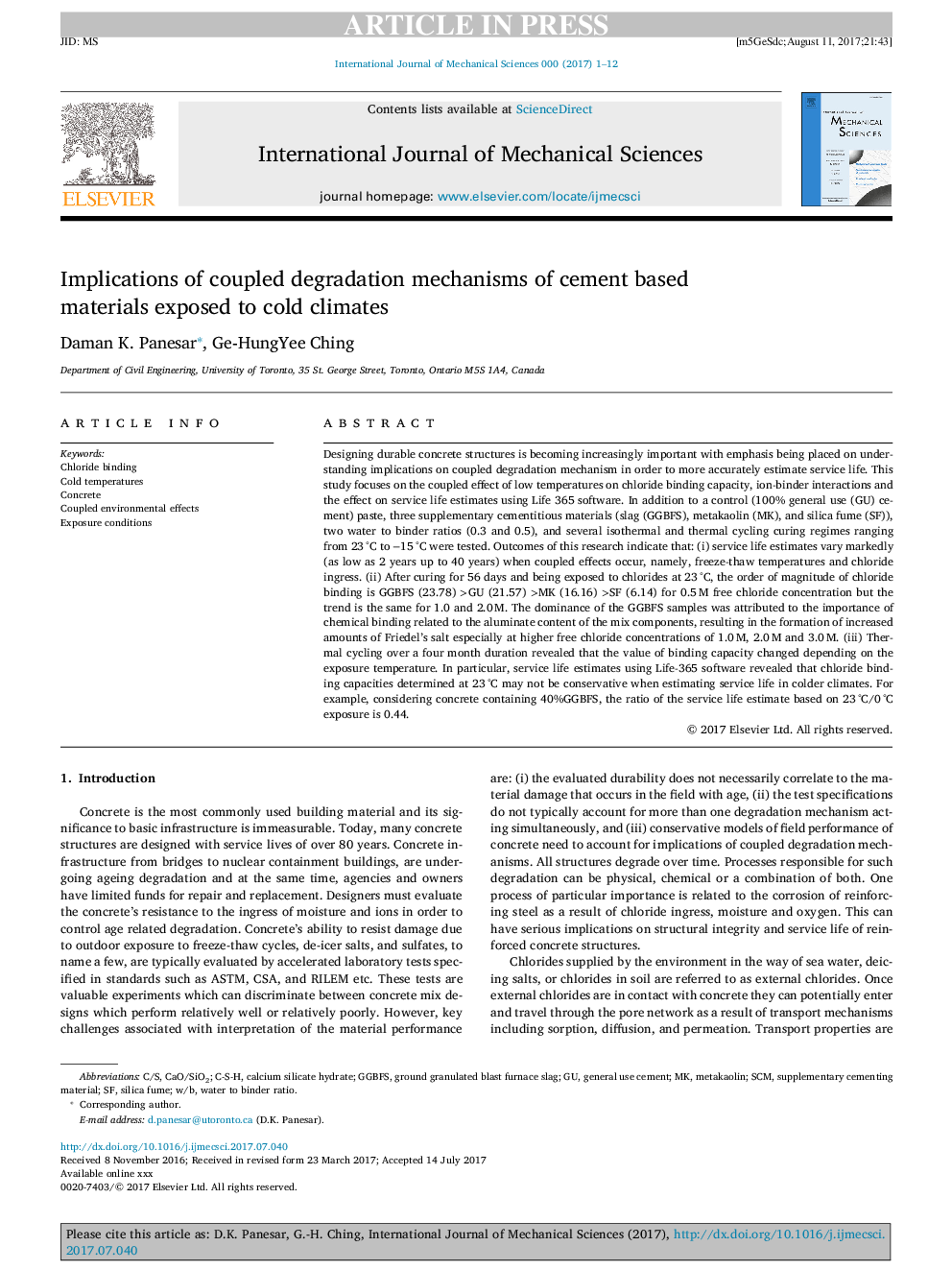| کد مقاله | کد نشریه | سال انتشار | مقاله انگلیسی | نسخه تمام متن |
|---|---|---|---|---|
| 7173662 | 1464947 | 2018 | 12 صفحه PDF | دانلود رایگان |
عنوان انگلیسی مقاله ISI
Implications of coupled degradation mechanisms of cement based materials exposed to cold climates
ترجمه فارسی عنوان
اثرات مکانیسم های تخریب شده مرتبط با مواد سیمان تحت تاثیر شرایط هوای سرد
دانلود مقاله + سفارش ترجمه
دانلود مقاله ISI انگلیسی
رایگان برای ایرانیان
کلمات کلیدی
C-S-HC/SSCMGGBFSW/BChloride binding - اتصال چرخهConcrete - بتن، بتونCold temperatures - دماهای سردSilica fume - دود سیلیکا، فوم سیلیکا، میکروسیلیکاGround granulated blast furnace slag - سرباره کوره ذوب گرانولExposure conditions - شرایط قرار گرفتن در معرضMetakaolin - متاکاولینSupplementary cementing material - مواد افزودنی سیمانWater to binder ratio - نسبت آب به نسبت باندCalcium silicate hydrate - هیدرات کلسیم سیلیکات
موضوعات مرتبط
مهندسی و علوم پایه
سایر رشته های مهندسی
مهندسی مکانیک
چکیده انگلیسی
Designing durable concrete structures is becoming increasingly important with emphasis being placed on understanding implications on coupled degradation mechanism in order to more accurately estimate service life. This study focuses on the coupled effect of low temperatures on chloride binding capacity, ion-binder interactions and the effect on service life estimates using Life 365 software. In addition to a control (100% general use (GU) cement) paste, three supplementary cementitious materials (slag (GGBFS), metakaolin (MK), and silica fume (SF)), two water to binder ratios (0.3 and 0.5), and several isothermal and thermal cycling curing regimes ranging from 23â¯Â°C to â15â¯Â°C were tested. Outcomes of this research indicate that: (i) service life estimates vary markedly (as low as 2 years up to 40 years) when coupled effects occur, namely, freeze-thaw temperatures and chloride ingress. (ii) After curing for 56 days and being exposed to chlorides at 23â¯Â°C, the order of magnitude of chloride binding is GGBFS (23.78) >GU (21.57) >MK (16.16) >SF (6.14) for 0.5â¯M free chloride concentration but the trend is the same for 1.0 and 2.0â¯M. The dominance of the GGBFS samples was attributed to the importance of chemical binding related to the aluminate content of the mix components, resulting in the formation of increased amounts of Friedel's salt especially at higher free chloride concentrations of 1.0â¯M, 2.0â¯M and 3.0â¯M. (iii) Thermal cycling over a four month duration revealed that the value of binding capacity changed depending on the exposure temperature. In particular, service life estimates using Life-365 software revealed that chloride binding capacities determined at 23â¯Â°C may not be conservative when estimating service life in colder climates. For example, considering concrete containing 40%GGBFS, the ratio of the service life estimate based on 23â¯Â°C/0â¯Â°C exposure is 0.44.
ناشر
Database: Elsevier - ScienceDirect (ساینس دایرکت)
Journal: International Journal of Mechanical Sciences - Volume 144, August 2018, Pages 865-876
Journal: International Journal of Mechanical Sciences - Volume 144, August 2018, Pages 865-876
نویسندگان
Daman K. Panesar, Ge-HungYee Ching,
